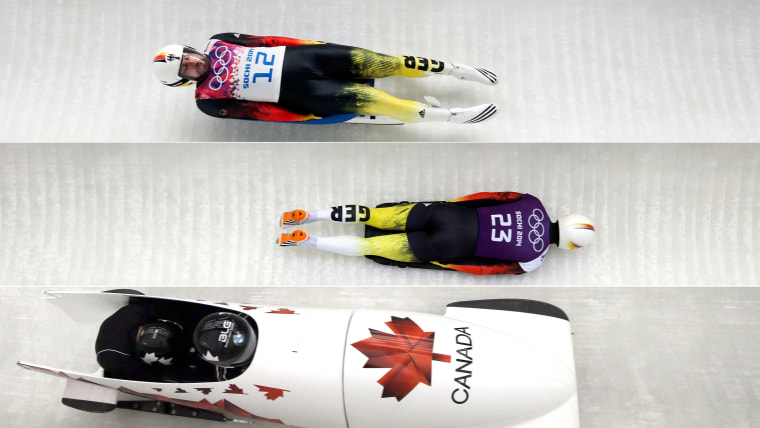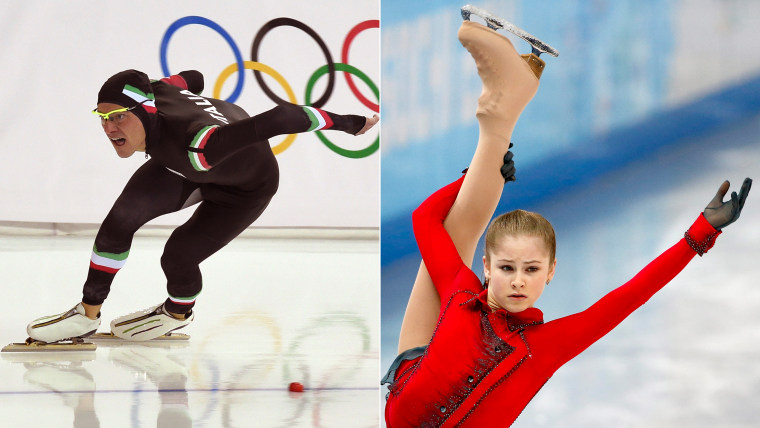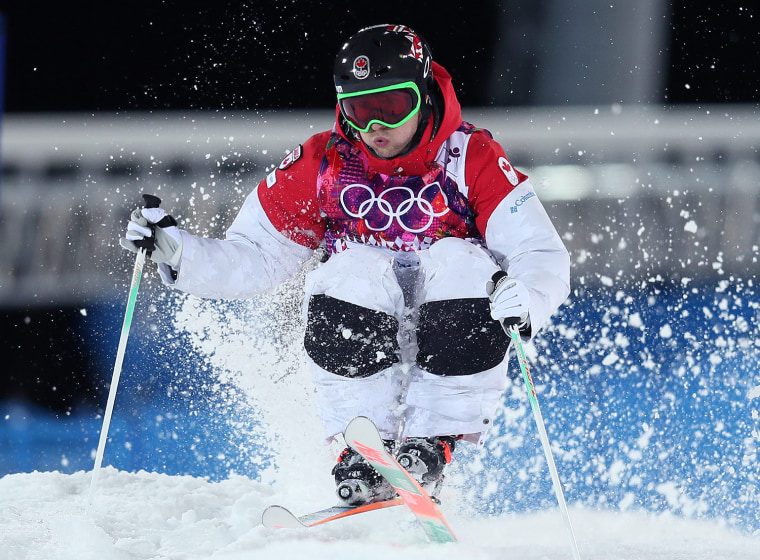As you oooh, ahhh and wince over different Winter Olympic events, do you find a host of questions running through your mind about weird sleds, weird skates and weird injuries? We’ve got your burning Sochi questions covered here!

What’s the difference between luge, bobsled and skeleton, anyway?
All three events take place on an ice-covered course with banking turns, but there are crucial differences between the three, including the type of sled used to navigate the run.
The only discipline in which the athlete starts in the sled is luge. The racer lies on his or her back on a flat sled, feet first, and then pulls himself or herself forward to begin the run. The racer then angles his or her body to steer down the course on the sled, which can reach speeds of up to 90 miles per hour. Luge is mainly an individual sport, although there is a two-man luge event, which TODAY’s Al Roker and Matt Lauer will attempt in Sochi in all their Spandexed glory.
Skeleton is almost like riding a luge sled, just while lying face down and head-first instead of feet first and using a differently modified sled. Also, the racer does not begin in the sled, but runs for about 40 meters before jumping face-first on the sled for the remainder of the ride. Like luge, athletes have to use body angles to guide the sled because there is no steering mechanism, and speeds can hit 90 mph.
Anyone who has seen “Cool Runnings” knows that the bobsled, which comes in the two-man and four-man variety, has to be pushed for up to 50 meters before the crew jumps in for the rest of the ride down the course. The bobsled has seats almost like a small car with runners at the bottom that help propel it down the icy course. Unlike skeleton and luge, it also has a mechanism that steers the sled that can be controlled by the driver. Bobsled is much more of a team discipline than luge or skeleton.

How are speed skates different from figure skates? They’re so funky-looking!
Speed skates have longer blades than figure skates in order to create more speed by distributing the skater’s weight and producing less friction. The longer blade also makes it easier for skaters to propel themselves with each stroke. Speed-skating blades can be up to 46 centimeters long, whereas figure-skating blades can be much shorter depending on the age, shoe size and skill level of the competitor.
Another type of funky-looking skate is the clap skate, which can be seen in the long-distance skating events. The heel of the blade is not attached to the skater’s boot, so with each stride, the blade quickly disconnects from the heel to keep the blade on the ice longer and increase the pushing power of the skater. Once the blade is fully extended, a spring-loaded mechanism snaps the blade back up to the boot, which creates a clapping sound.

What does skiing moguls do to your body — especially your knees?
Training at the elite Olympic level can be hard on the lower back and legs because of the tremendous speed and force placed on the lower body. The knees act like springs and take huge hits on the slope because they soak up every bump, break and hard turn on the course.
“When you’re hitting the mogul, you’re moving forward. For a moment, you’re foot is stopping you and that force is usually transmitted up to the knee,” said Nick DiNubile, a medical spokesman for the American Academy of Orthopaedic Surgeons. “If you hit it wrong and your body continues to go forward, but your knee and lower leg have stopped, you can pop your anterior cruciate ligament,” or ACL, one of the knee’s major ligaments.
Peter Millett, the orthopaedist who two years ago performed surgery on Olympian Heidi Kloser’s left knee (not the one she recently injured), put it in perspective by estimating that mogul skiers head downhill at a rate between 25-30 miles an hour. Fortunately, medical advances have come a long way to put athletes back into action. “Because of modern sports medicine and orthopedic surgery," Millett said, "we can do a lot to repair athletes to get them back to the same level if not higher level.”